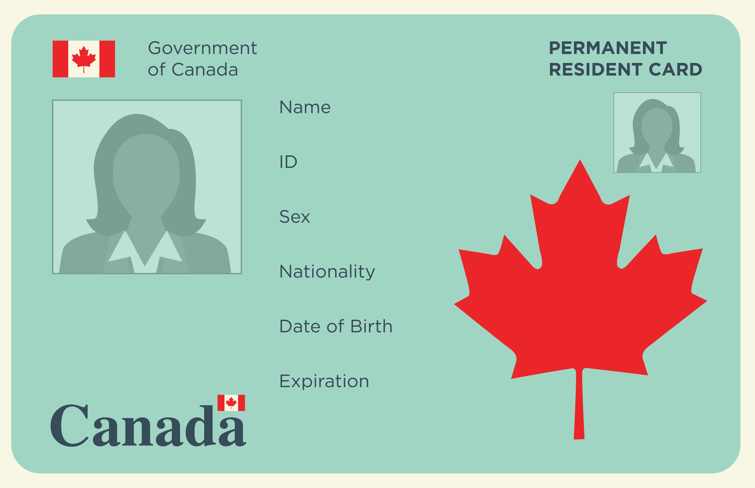Canadian Immigration To Exchange Maple Leaf Card: Cumbersome Conditions, Changes In Domestic Residence Address Requirements
Canadian Immigration To Exchange Maple Leaf Card: Cumbersome Conditions, Changes In Domestic Residence Address Requirements
The Maple Leaf Card Regulations for Canadian Immigration [#Canadian Immigration# Introduction] The maple leaf card held by permanent residents who immigrate to Canada is valid for five years. The five-year period expires. The old card is invalid and a new card needs to be replaced. As Canada's immigration policy becomes tighter and tighter
[#Immigration# Introduction] Maple Leaf Cards held by permanent residents who immigrate to Canada are valid for five years. After five years of expiration, the old card will be invalid and a new card needs to be replaced. As Canada's immigration policies become closer, the conditions for replacing maple leaf cards have become increasingly troublesome. Below are the compilation of the maple leaf card rules for Canadian immigration. Welcome to read!
【Article 1 Maple Leaf Card Regulations for Canadian Immigration
Permanent residents do not need to receive the card in person when re-launching the maple leaf card, but instead send it to the mail, but some are not in Canada, so they use third-party addresses such as immigration consultants or relatives and friends as email addresses. The Immigration Department has specially revised its operating standards. Except for new immigrants who apply for a maple leaf card for the first time, all applicants who replace the maple leaf card must provide their residence address in the country and cannot be replaced by a third-party address. Otherwise, it will affect issuance issues and may even affect permanent resident status.
1. Canadian Customs has a record of exit and entry. Passengers must use their passport to leave their export and entry records on the border between the United States and Canada and share their entry and exit information.
2. Replacing a maple leaf card requires tax bills to be provided over the past five years. New maple leaf card replacement requires a Canadian tax return from the past five years. Immigration will use tax returns over the five years to determine whether the applicant can live in Canada.
If you have not provided a tax bill in the past five years, or you have not submitted a tax bill in the past five years, or you have applied for a non-tax resident in the past, you cannot submit your application normally and only submit your application after the tax bill is resolved.
3. Immigration has the right to go to Canadian Customs to retrieve your entry and exit records. The new project has been added to the new Maple Leaf Card application form, i.e. Item 23, and the Immigration Bureau requires you to provide Canadian customs records on Canadian entry and exit from Canada over the past five years.
There are two ways to retrieve Canadian Customs entries and exit records:
Method 1: The applicant himself found a way to retrieve records of entering and leaving the Canadian border over the past five years.
Method 2: The applicant authorized the Immigration Bureau to retrieve records of their entry and exit from the Canadian border over the past five years. If the applicant's record of entry and exit in the past five years and the applicant's filling out the form may result in the application failure, or the Immigration Bureau will conduct a more detailed investigation of the applicant's performance in residence obligations.
The Canadian Border Services Agency is gradually improving its entry and exit records as planned:
During the first phase, anyone entering and leaving Canada will swipe their card and keep their entry and exit records.
In the second phase, anyone entering Canada from the airport and other borders will swipe their card and keep their entry and exit records.
Under Maple Leaf’s reissue regulations, permanent residents must live in Canada for more than two years before they can qualify for renewal. Such restrictions are not employed by Canadian companies that appoint overseas employed persons and spouses with citizenship to employ spouses or spouses overseas. As a result, many "astronaut" families have spouses who return to their original residence after they have acquired citizenship and live with their partner and live with them, holding maple leaf cards to ensure they do not lose their immigration status.
【Article 2】Guidelines for applying for skilled immigration in Saskatchewan, Canada
Saskatchewan is one of Canada's major energy provinces. Saskatchewan is huge and sparsely populated and has very rich natural resources, so many people choose to immigrate to Saskatchewan to develop.
1. Application conditions
1. The applicant resides outside Canada or legally resides in Canada;
2. The applicant has not yet filed a refugee application to the Canadian government;
3. The applicant has received a nomination confirmation from a Saskatchewan employer before submitting the application; (most importantly, how to obtain it depends on the ability of each applicant)
4. Applicants have a high school degree or higher;
5. Applicants will encounter at least one year of work experience;
6. Applicants' assets reached more than 40,000 Canadian dollars. (No requirement, CAD 40,000)
7. The applicant's age shall not be over 55 years old and shall not be less than 18 years old.
8. The applicant has a certain level of English (if his IELTS score is better, but there is no relevant English learning or training certificate provided by IELTS)
Abstract: Applicants need to meet the Saskatchewan scoring criteria, with a total score of 35 points in 8 aspects. These 8 criteria are age, work experience, education, language proficiency, kinship, adaptability, financial resources and housing support in Saskatchewan.
2. Application steps
The approval period for the Saskatchewan Immigration Department is usually 6 to 9 months.
1. Applicants prepare basic documents for family immigration. Usually, in China, it takes about a month to notarize basic documents such as employer certificates, qualification certificates, birth certificates, marital status certificates and crime-free certificates.
2. Find and contact the employer. The most wasted time and the hardest work.
3. Prepare and handle government-required procedures. It can usually be done while looking for an employer.
Applicants who have been approved by the Provincial Immigration Bureau can apply for a temporary work visa and enter Canada first if they wish, and the employer needs it. The approval process for applying for a temporary work visa is relatively simple and takes a short time. Applicants can apply for this short-term visa alone or at the same time as their family members.
The Federal Immigration Bureau approved the approval time of 6 to 12 months. Because the federal queue is serious, it takes more time, but the approval process is very simple. The federal approval process is:
1. Investigate the authenticity of professional skills. Whether the applicant truly possesses the professional skills of a Saskatchewan position is the focus of the implementation of the immigration officer survey.
2. No criminal record investigation. Applicants with more than 6 months of work experience must provide criminal proof from their country of residence.
3. Physical examination. Applicants and their families need to pass the physical examination required by the Immigration Bureau.
If there is no problem with the above review, the applicant will obtain a Canadian immigration visa. Typically, the approval time for skilled immigrants in Saskatchewan is about 18 months.
【Part 3】Identity of Canadian Immigration
1. Alberta
Alberta is Canada's fourth largest province with a population of 4,232,000, accounting for 11.7% of the country. The province has an area of 661, and the capital is Edmonton. Alberta is one of the three prairie provinces. Canada's most spectacular rocky mountains run through the province, producing oil and gas. It can be said that this is one of the wealthiest provinces in Canada, but the cost of living in this province is not very high. The provincial capital Edmonton is located in the geographical center of the province. The emerging city of Calgary is full of enthusiasm and opportunity. The annual Cowboy Festival is a global event.
School suggestions:
The University of Alberta is located in Edmonton, the capital of the province, and is the object of many study abroad parties. The University of Calgary, located in the emerging city of Calgary, has also achieved outstanding results in the main rankings in recent years.
2. Introduction to other provinces
There are 10 provinces in Canada. The above four are welcome and the most selected provinces. However, in the remaining provinces, despite a slightly smaller population, the region is slightly smaller and has a less popular level, which does not mean there is no choice here. Small cities will have the advantages of small cities. After all, there will be some good universities waiting for you here.
3. Saskatchewan
Saskatchewan is Canada's sixth largest province with a total population of 1,143,000, accounting for 3.2% of the country. The province has an area of 651, and the capital is Regina.
School recommendation: University of Saskatchewan, located in Saskatoon.
4. Newfoundland and Labrador
Newfoundland ranks ninth in the country with 528,300 people, accounting for 1.5% and an area of 405, while the province's capital is St. John.
School advice: Newfoundland Memorial University
As far as immigration is concerned: Canadian immigration has added a pilot program for immigration in the Atlantic Province. International students have two years of courses to immigrate after graduation and find a job.





